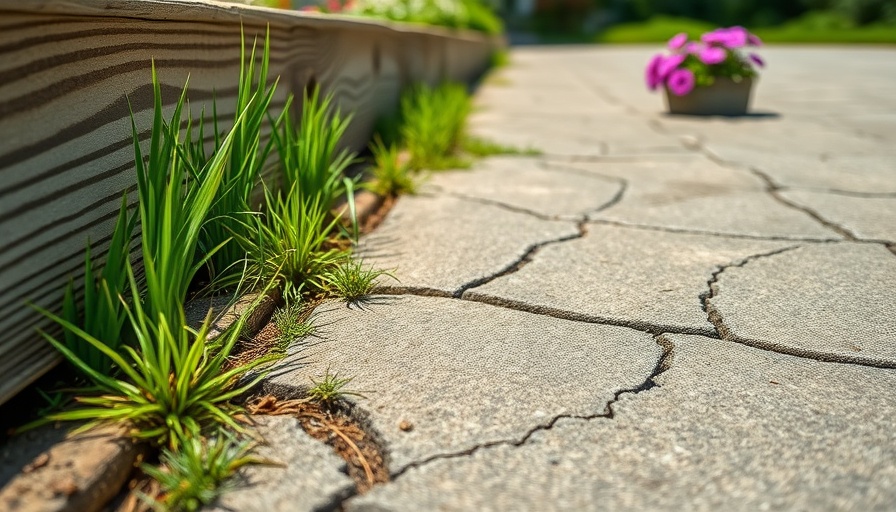
Transform Your Driveway: The Easiest and Most Affordable Repairs
Is your concrete driveway starting to show signs of age? Cracks can be unsightly and may lead to more significant damage if left unattended. Fortunately, repairing those cracks doesn’t have to be a complicated or expensive affair. With the right tools and materials, Pearl City residents can tackle driveway repair projects with ease. Let's explore how you can enhance your home's curb appeal and potentially increase its value by fixing driveway cracks yourself.
Understanding the Causes of Concrete Cracks
Concrete may crack for several reasons, including temperature fluctuations, ground shifting, or simply the wear and tear that comes with daily use. In Pearl City, where humidity and rainfall are common, these factors can accelerate the deterioration of your driveway. Recognizing what causes these cracks can help you choose the appropriate method to repair them. If you can identify the issue, you'll be better equipped to use fillers that suit the nature of your cracks, leading to more durable repairs.
Selecting the Right Materials for the Job
To begin your driveway repair project, collecting the necessary materials is crucial. The best concrete crack fillers on the market fall into two main categories: self-leveling and non-sag fillers. Self-leveling fillers are ideal for thin, irregular cracks, with a gooey consistency that allows them to seamlessly fill in gaps. Non-sag fillers may require a bit more effort, as they are thicker and need to be worked into the crack manually. For most beginner DIYers, self-leveling fillers are simpler and yield better results.
Step-by-Step Guide to Fixing Driveway Cracks
Follow these five simple steps to restore your driveway:
- Choose the Right Concrete Sealant: Decide between self-leveling or non-sag fillers based on your cracks’ size and shape.
- Prepare the Crack: Clean the area thoroughly using a leaf blower or shop vac to ensure no debris remains.
- Fill the Crack: Open your sealant and apply it according to the manufacturer’s instructions, ensuring it reaches deep into the crack.
- Let It Set: Allow the filler to cure according to the product guidelines. This usually requires keeping the area dry for 24 hours.
- Finish Up: Once dry, consider sanding any excess filler to achieve a smooth finish that blends with your driveway.
Future Trends in Driveway Maintenance
The trend of DIY home improvement projects has seen remarkable growth, and repairing driveway cracks fits neatly into this category. As homeowners increasingly take on repairs themselves, tools and materials become more accessible and affordable. It’s expected that community workshops and online tutorials will become more prevalent, allowing residents in Pearl City to share their successes and troubleshooting tips. Furthermore, a shift toward environmentally friendly products is emerging, with many seeking sustainable materials for home repairs.
Local Effects of Driveway Repair
Beyond the aesthetic improvements, fixing driveway cracks can significantly impact property values—especially in neighborhoods like Pearl City, where first impressions matter. Well-maintained driveways not only increase the visual appeal of your home but can also boost property resale value by signaling to potential buyers that your home is cared for. Additionally, maintaining your driveway can prevent costly water damage by directing runoff more efficiently, safeguarding your landscape.
Let’s Talk Cost: Budgeting for Your Repairs
One of the best aspects of DIY driveway repairs is the affordability. Most crack repair projects can be completed for anywhere between $10 and $60, depending on the materials chosen and the size of the repairs needed. Focusing on this budget-friendly option not only helps in saving money but allows homeowners to develop valuable skills as well.
Conclusion: Take Control of Your Home's Maintenance
Now that you're armed with the know-how to repair your driveway, it's time to take action. By fixing those cracks, you enhance your home's appearance, increase its value, and build your skills as a DIYer. More and more Pearl City residents are discovering the immense satisfaction of improving their homes independently. So grab your tools, roll up your sleeves, and get started!
 Add Row
Add Row  Add
Add 




Write A Comment